Wikipedia:Picture of the day/March 2007
|
Featured picture tools: |
These featured pictures, as scheduled below, appeared as the picture of the day (POTD) on the English Wikipedia's Main Page in March 2007. Individual sections for each day on this page can be linked to with the day number as the anchor name (e.g. [[Wikipedia:Picture of the day/March 2007#1]] for March 1).
You can add an automatically updating POTD template to your user page using {{Pic of the day}} (version with blurb) or {{POTD}} (version without blurb). For instructions on how to make custom POTD layouts, see Wikipedia:Picture of the day.
March 1
|
The skyline of Chicago, Illinois, USA, as seen from the Adler Planetarium. The scene stretches from Shedd Aquarium on the left to Navy Pier on the right. In between, other Chicago landmarks can be seen, such as, from left to right, Sears Tower (tall black building), the Aon Center (tall white building), and the John Hancock Center (black trapezoidal building). Photo credit: Buphoff
Recently featured:
|
March 2
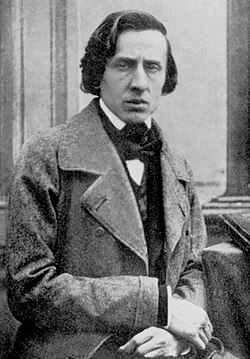
|
The only known photograph of Frédéric Chopin, often incorrectly described as a daguerreotype. It is believed to have been taken in 1849 during the degenerative stages of his tuberculosis, shortly before his death. Chopin, a Polish pianist and composer of the Romantic era, is widely regarded as one of the most famous, influential, admired and prolific composers for the piano. He moved to Paris at the age of twenty, adopting the French variant of his name, "Frédéric-François", by which he is now known. Photo credit: Louis-Auguste Bisson
Recently featured:
|
March 3
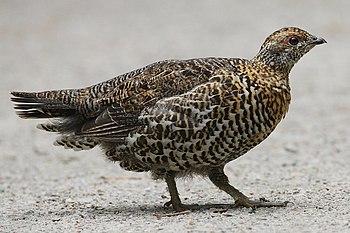
|
A female Spruce Grouse (Falcipennis canadensis), a medium-sized grouse native to the boreal forests or taiga across Alaska, Canada and the northern United States. Grouses nest on the ground in dense growth. They are not migratory, but some move short distances by foot to a different location for winter. Photo credit: Mdf
Recently featured:
|
March 4
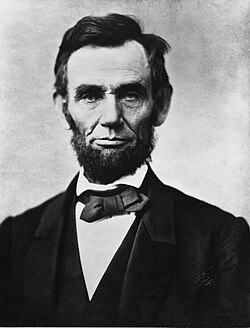
|
A head-and-shoulders portrait of Abraham Lincoln, the 16th President of the United States and first President from the Republican Party, from 1863. Considered one of the greatest Presidents of the U.S., Lincoln is most famous for outlawing slavery in the Confederacy through the Emancipation Proclamation and the nation with the Thirteenth Amendment. He is also noted for his oratorical skills, having given famous speeches such as the Gettysburg Address. Lincoln had a lasting influence on U.S. political values by redefining republican values, promoting nationalism, and enlarging the powers of the federal government. His assassination, in 1865, made him a martyr for the ideal of national unity. Photo credit: Alexander Gardner
Recently featured:
|
March 5

|
|
The quadrangle of Windsor Castle, one of the principal official residences of the British monarch. On the far left is the State Apartments, at the end of the quad is the Private Apartments, where Queen Elizabeth II resides on weekends, and on the right, the South Wing. Located at Windsor in the English county of Berkshire, it is the largest inhabited castle in the world and, dating back to the time of William the Conqueror, the oldest in continuous occupation. Photo credit: Diliff
Recently featured:
|
March 6
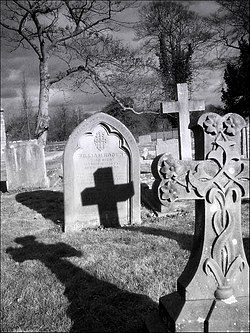
|
Headstones in the cemetery at Castle Ashby, an estate village and country house in rural Northamptonshire, England. A cemetery is a place (usually an enclosed area of land) in which dead bodies are buried. In Europe from the 7th to the late 18th century, burial was under the control of the church and on sacrosanct church ground. Municipal or independent cemeteries, as we now know them, date from the early 19th century, the earliest being Pere Lachaise in 1804 in Paris. The idea then spread through Europe with the Napoleonic invasions. Photo credit: R. Neil Marshman
Recently featured:
|
March 7
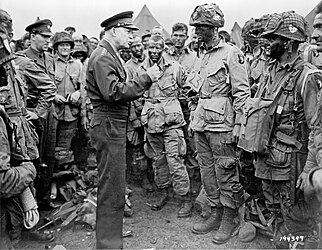
|
General of the Army Dwight D. Eisenhower gives the order of the day, "Full victory – nothing else", to paratroopers of the 502nd Infantry Regiment, 101st Airborne Division, at RAF North Witham in England, just before they board their airplanes to participate in the first assault of the D-Day invasion. Eisenhower's success in planning and executing the battle led him to be seen as a hero by the American public. Photo credit: United States Army
Recently featured:
|
March 8
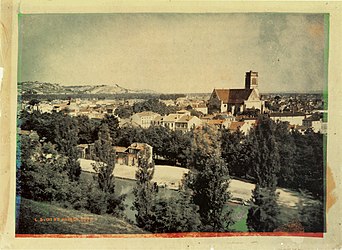
|
An 1877 photo of Agen, France, by Louis Ducos du Hauron, a French pioneer of color photography. This is one of the earliest examples of subtractive color and one of the first to be printed on paper. The overlapping, subtractive yellow, cyan and red (magenta) image elements can clearly be seen at the edges. The CMYK color model, used for all color printing today, is an example of a subtractive color space. Photo credit: Louis Ducos du Hauron
Recently featured:
|
March 9
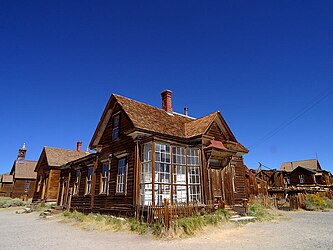
|
A street corner in the ghost town of Bodie, California, named after William S. Bodey who discovered gold in the area in 1859. By 1880 Bodie had a population of nearly 10,000. Bodie is also notable for a hydroelectric plant built 13 miles (21 km) away in 1893, one of the first transmissions of electricity over long distance. The town was declared a National Historic Landmark in 1961 and has been in a state of arrested decay ever since. Photo credit: Jon Sullivan |
March 10

|
|
An animation showing how to use a vernier caliper, which is a caliper that uses a vernier scale to interpolate linear measurements. Vernier calipers can measure internal and external dimensions using, respectively, the uppermost and lower jaws, and also depths, using the depth probe (located at the right end). In this example, the first two digits (2.4) are decided by the location of the zero of the vernier scale in the centimeter scale, and the last digit (0.07), by the first line of the vernier scale that exactly matches a line of the centimeter scale above. Image credit: Joaquim Alves Gaspar |
March 11

|
30 St Mary Axe, otherwise known as "The Gherkin" or the Swiss Re building, at 180 m (590 ft) is the 6th tallest in London, England. Designed by Foster and Partners, the architectural design of the tower contrasts sharply against more traditional buildings in London. Its design won the prestigious RIBA Stirling Prize for the best new building by a RIBA architect in 2004 and the 2003 Emporis Skyscraper Award for the best skyscraper in the world completed that year. The building is visible from a long distance from Central London: from the north for instance, it can be seen on the M11 motorway some 32 km (20 mi) away. Photo credit: Diliff
Recently featured:
|
March 12
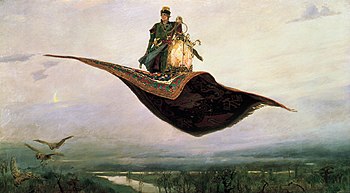
|
A painting depicting Ivan Tsarevich, one of the main heroes of Russian folklore, riding a magic carpet after having captured the Firebird, which he keeps in a cage. This work was Viktor Vasnetsov's first attempt at illustrating Russian folk tales and inaugurated a famous series of paintings on the themes drawn from Russian folklore. Artist: Viktor Vasnetsov
Recently featured:
|
March 13
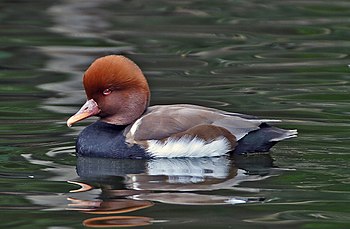
|
The Red-crested Pochard (Netta rufina) is a large diving duck. Its breeding habitat is lowland marshes and lakes in southern Europe and southern and central Asia. It is somewhat migratory, and northern birds winter further south and into North Africa. These birds feed mainly by diving or dabbling. They eat aquatic plants, and typically upend for food more than most diving ducks. Photo credit: Jon Sullivan
Recently featured:
|
March 14

|
Saturn eclipsing the Sun, as seen by the Cassini orbiter. Individual rings seen in this image include (in order, starting from most distant): E ring, Pallene ring (visible very faintly in an arc just below Saturn), G ring, Janus/Epimetheus ring (faint), F ring (narrow brightest feature), Main rings (A,B,C), and D ring (bluish, nearest Saturn). Interior to the G ring and above the brighter main rings is the pale dot of Earth. Photo credit: Cassini orbiter
Recently featured:
|
March 15
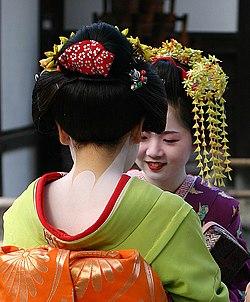
|
A photo of two maiko (apprentice geisha), with the typical make-up clearly visible, leaving portions of the nape uncovered. This is done to accentuate what is a traditionally erotic area. The white face make-up is supposed to resemble a mask, and a line of bare skin around the hairline helps create that illusion. Established geisha generally wear full white face makeup characteristic of maiko only during special performances. Photo credit: Daniel Bachler
Recently featured:
|
March 16
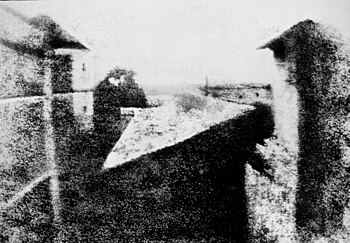
|
The first successful permanent photograph, created in 1826, is titled "View from the Window at Le Gras". It required an eight-hour exposure in bright sunshine and was printed on a polished pewter plate covered with a petroleum derivative called bitumen of Judea. Due to the long exposure, the buildings are illuminated by the sun from both right and left. Photo credit: Nicéphore Niépce
Recently featured:
|
March 17
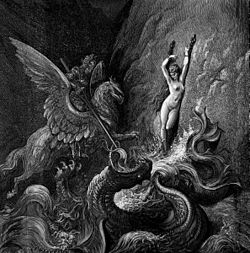
|
A scene from Orlando furioso ("Orlando the Furious"), an epic poem written by Ludovico Ariosto in 1516. It is a sequel to Matteo Maria Boiardo's Orlando innamorato ("Orlando in Love"), but it is quite distant from the other work in that it does not preserve the humanistic concepts of knight-errantry. In this scene, Ruggierio is rescuing Angelica, a typical princess and dragon premise. Artist: Gustave Doré
Recently featured:
|
March 18

|
The Black-headed Gull (Larus ridibundus) is a small gull which breeds in much of Europe and Asia, and also in coastal eastern Canada. Despite the name, the gull's head is only black during the summer. In winter the head becomes white as seen here, leaving just dark vertical streaks. Photo credit: Diliff
Recently featured:
|
March 19
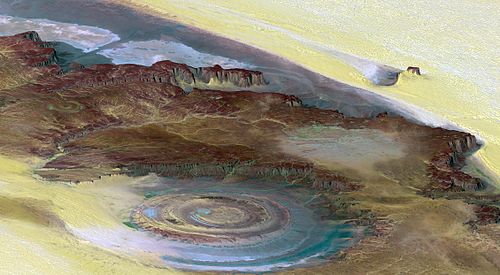
|
|
The Richat Structure is a depression in the country of Mauritania, almost 50 km (30 mi) across. It was originally thought to be the impact of a meteorite. Now it is thought to be a symmetrical uplift (circular anticline or dome) that has been exposed to erosion. In this false-color photo, bedrock is brown, sand is yellow and white, vegetation is green, and salty sediments are blue. Photo credit: Landsat 7
Recently featured:
|
March 20

|
A test firing of twin linear XRS-2200 aerospike engines, originally built for the Lockheed Martin X-33, a next-generation, commercially operated reusable launch vehicle. The aerospike engine is a type of rocket engine that maintains its efficiency across a wide range of altitudes through the use of an aerospike nozzle. A vehicle with an aerospike engine uses 25-30% less fuel at low altitudes, where most missions have the greatest need for thrust. Photo credit: Marshall Space Flight Center
Recently featured:
|
March 21

|
This photo of an opened oviduct with an ectopic pregnancy features a spectacularly well preserved 10-millimeter five-week-old human embryo. It is uncommon to see any embryo at all in an ectopic, and for one to be this well preserved (and undisturbed by the prosector's knife) is quite unusual. Even an embryo this tiny shows very distinct anatomic features, including tail, limb buds, heart (which actually protrudes from the chest), eye cups, cornea/lens, brain, and prominent segmentation into somites. Photo credit: Ed Uthman, M.D.
Recently featured:
|
March 22

|
Three Richard's Pipit (Anthus richardi) chicks in a nest. This species of pipit is a medium-sized passerine bird which breeds in open grasslands in Siberia. It is a long distance migrant moving to open lowlands in South Asia, East Africa and Australia. It is a rare but regular vagrant to Western Europe. Photo credit: Benjamint444
Recently featured:
|
March 23
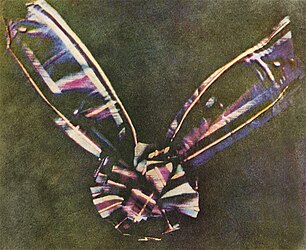
|
The first permanent colour photograph, taken by James Clerk Maxwell in 1861. The image is of a tartan ribbon and was created by taking three photos of the ribbon, each time with a red, green, or blue filter in front of the lens. The three images were developed and then projected onto a screen with three different projectors, each equipped with the same colour filter used to take its image. Photo credit: James Clerk Maxwell
Recently featured:
|
March 24
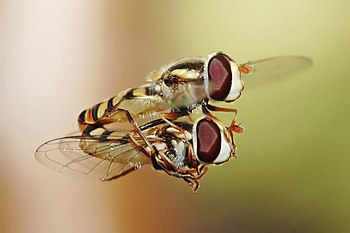
|
Two Melangyna viridiceps (called Common Hoverflies in Australia) mating in mid-air. The male, which can be identified by the eyes meeting at the top of its head, is on top. The term "hoverfly" refers to about 6,000 species of flying insects in the family Syrphidae. They are often seen hovering at flowers and are important pollinators. Photo credit: Fir0002
Recently featured:
|
March 25
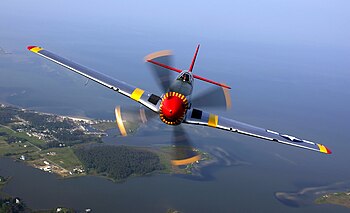
|
A P-51 Mustang in a heritage flight during an airshow at Langley Air Force Base, Virginia, USA. The P-51 was a long-range single-seat fighter aircraft that entered service with Allied air forces in the middle years of World War II. It remained in service with some air forces until the early 1980s. Photo credit: Tech. Sgt. Ben Bloker (USAF)
Recently featured:
|
March 26
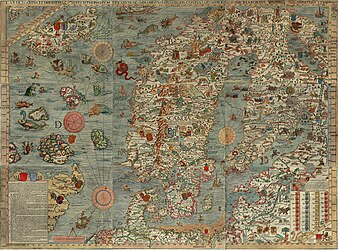
|
The carta marina is the earliest detailed map of the Nordic countries. It took twelve years to finish and the first copies were printed in 1539 in Venice. Its existence had long been considered apocryphal, until a copy was discovered in Munich in 1886. The map is divided in 3×3 sheets with the dimension 55x40 cm (22x16 in), each made from a separate woodcut block. Historia de gentibus septentrionalibus (Rome, 1555) is a much larger commentary on the map. Map credit: Olaus Magnus
Recently featured:
|
March 27
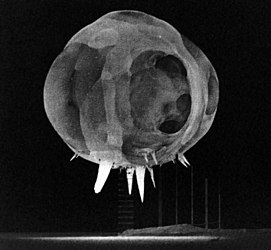
|
A Rapatronic photo of the rope trick effect, the name for the lines and spikes which can emanate from the fireball of a nuclear explosion just after detonation, from the Tumbler-Snapper test series of 1952. The fireball has a surface temperature of over 20,000 kelvins and emits huge amounts of visible light radiation. The "rope tricks" which protrude from the bottom are caused by the heating, rapid vaporization and then expansion of the mooring cables tethering the tower supporting the nuclear bomb at the start of the test. Photo credit: Lawrence Livermore National Laboratory
Recently featured:
|
March 28

|
The Australian Pelican (Pelecanus conspicillatus), also known as the Goolayyalibee, is a species of pelican widespread on the inland and coastal waters of Australia and New Guinea. Compared to other pelican species, they are medium-sized: 1.6 to 1.8 m (5.25 to 6 ft) long with a wingspan of 2.3 to 2.5 m (7.6 to 8.25 ft) and weighing between 4 and almost 7 kg (9 to 15 lbs). They are predominantly white, with black and white wings and a pale, pinkish bill which, like that of all pelicans, is enormous—particularly in the male. Photo credit: Fir0002
Recently featured:
|
March 29

|
Aisles of packaged food in a Fred Meyer hypermarket in Portland, Oregon. A hypermarket is a combination of a supermarket and a department store, and the Fred Meyer chain is one of the pioneers of the hypermarket format in the United States. Kroger, which owns Fred Meyer, is the top grocery retailer and the third largest general retailer in the country. Photo credit: Lyza Danger
Recently featured:
|
March 30
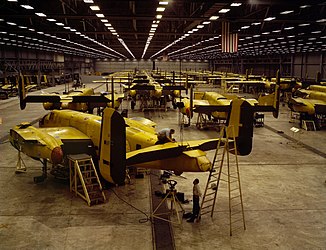
|
A 1942 mass production line of North American Aviation B-25 Mitchell bombers at Fairfax Airport, Kansas City, Kansas, USA. This twin-engine aircraft was used with devastating effect against German and Japanese targets in every combat theater of World War II. More than half of the 10,000 planes built during the war were constructed at Fairfax Airport. Photo credit: Alfred T. Palmer, USOWI
Recently featured:
|
March 31

|
A small partial map of the Internet. Each line is drawn between two nodes, representing two IP addresses. This graph contains over 40,000 nodes, which represents about 2% of the Class C network address space. Image credit: Matt Britt
Recently featured:
|
Picture of the day archives and future dates

